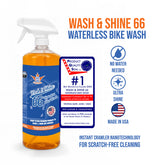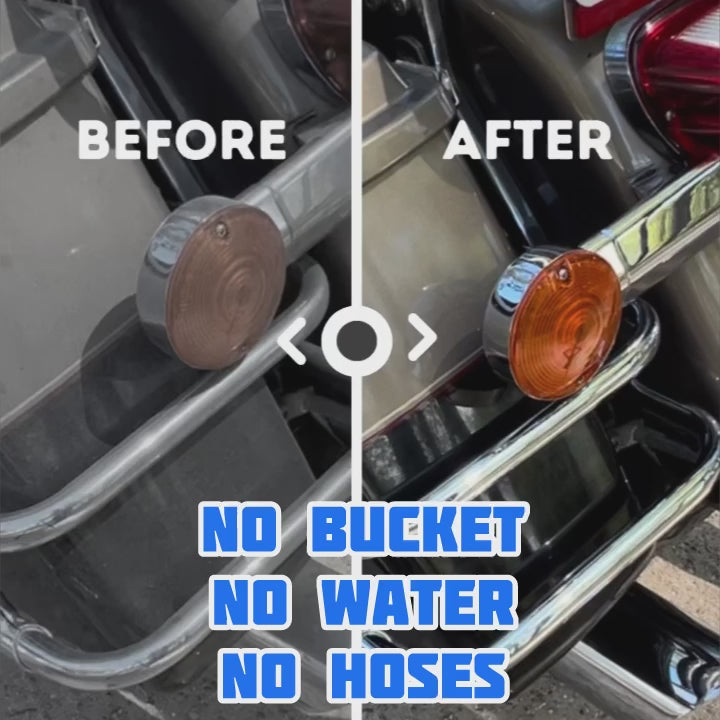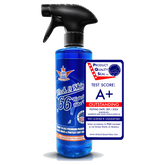What is a Hybrid Ceramic Coating? Understanding Its Benefits
Hybrid ceramic coatings are changing the way we protect cars, buildings, and equipment. Most people expect just another shiny layer, but these coatings actually use a special blend of organic and inorganic chemicals to form a microscopic shield that fuses with the surface itself. What might surprise you is that this integration makes the protection last for years, while old-fashioned coatings fade away in months.
Table of Contents
- Defining Hybrid Ceramic Coating: The Basics
- Why a Hybrid Ceramic Coating Matters for Homeowners and Vehicle Owners
- The Science Behind Hybrid Ceramic Coatings: How They Work
- Key Features and Advantages of Using Hybrid Ceramic Coatings
- Real-World Applications: Where and Why to Use Hybrid Ceramic Coatings
Quick Summary
| Takeaway | Explanation |
|---|---|
| Hybrid ceramic coatings offer long-lasting protection. | They provide a durable, chemical-bonded layer that outlasts traditional coatings, significantly extending surface lifespan. |
| Unmatched resistance to environmental factors. | These coatings protect against UV radiation, chemicals, and abrasions, preserving the integrity and appearance of surfaces. |
| Cost-effective in the long term. | By reducing maintenance needs and prolonging the life of surfaces, hybrid ceramic coatings yield substantial savings over time. |
| Versatile applications across industries. | Suitable for automotive, architectural, and industrial uses, these coatings adapt to various materials, enhancing their protective capabilities. |
| Advanced molecular bonding technology. | The unique molecular structure integrates deeply with surfaces, providing enhanced adhesion and long-term effectiveness compared to conventional coatings. |
Defining Hybrid Ceramic Coating: The Basics
A hybrid ceramic coating represents an advanced protective solution that combines multiple technological approaches to surface protection. Unlike traditional coatings, hybrid ceramic coatings leverage innovative chemistry to deliver superior performance across various applications. Learn more about ceramic coating technologies that revolutionize surface protection.
The Fundamental Chemistry
Hybrid ceramic coatings are engineered through a sophisticated blend of organic and inorganic materials. This unique composition allows the coating to incorporate the best attributes of different chemical structures. The organic components provide flexibility and adhesion, while the inorganic elements contribute exceptional hardness and thermal resistance.
The core mechanism involves creating a molecular bond with the surface, which means the coating doesn’t just sit on top of the material but actually integrates with its structure. This integration results in a more durable and long-lasting protective layer compared to traditional single-component coatings.
Performance and Protection Characteristics
What sets hybrid ceramic coatings apart are their remarkable performance characteristics. These coatings offer comprehensive protection against multiple environmental challenges:
- Exceptional resistance to UV radiation
- Superior water and dirt repellency
- Enhanced scratch and abrasion resistance
- Significant thermal stability across temperature ranges
Whether applied to automotive surfaces, architectural materials, or industrial equipment, hybrid ceramic coatings provide a robust shield that maintains aesthetic quality while extending the functional lifespan of treated surfaces. The technology represents a significant advancement in protective coating solutions, offering unparalleled defense against environmental degradation.
To clarify the main differences between hybrid ceramic coatings and traditional coatings, the table below provides a side-by-side comparison of key characteristics and benefits.
| Feature / Benefit | Hybrid Ceramic Coating | Traditional Coating |
|---|---|---|
| Composition | Blend of organic & inorganic materials | Usually single-component (organic or wax) |
| Application Longevity | Lasts for years with proper application | Lasts months; requires frequent reapplication |
| Molecular Bonding | Chemically bonds and integrates with surface | Sits on surface without true molecular bond |
| UV & Environmental Resistance | Exceptional; resists UV, chemicals, water, abrasions | Limited; degrades faster under harsh conditions |
| Maintenance Needs | Minimal; reduces long-term upkeep | Requires frequent touch-ups or replacement |
| Versatile Applications | Suitable for cars, homes, industry, marine, outdoor | Mostly for automotive or household use |
| Cost-Effectiveness (Long-Term) | High; reduces replacement and maintenance costs | Lower upfront, but higher upkeep costs |
Why a Hybrid Ceramic Coating Matters for Homeowners and Vehicle Owners
Hybrid ceramic coatings have rapidly transformed surface protection strategies for both residential and automotive applications. By providing unparalleled protection against environmental degradation, these advanced coatings represent a critical investment for property and vehicle maintenance. Explore our advanced graphene coating solutions that complement hybrid ceramic technologies.
Long Term Surface Preservation
Homeowners and vehicle owners face constant challenges from environmental elements like ultraviolet radiation, moisture, dirt, and chemical contaminants. Hybrid ceramic coatings create a robust molecular barrier that shields surfaces from these destructive forces. By forming a chemically bonded protective layer, these coatings prevent premature aging, color fading, and structural deterioration.
The economic benefits are substantial. By reducing maintenance requirements and extending the functional lifespan of surfaces, hybrid ceramic coatings offer significant long-term value. A single professional application can protect surfaces for years, minimizing recurring maintenance expenses.
Comprehensive Protection Across Applications
Hybrid ceramic coatings deliver remarkable versatility across different surfaces and environments. Potential applications include:
- Automotive paint and exterior surfaces
- Home exterior walls and architectural elements
- Outdoor furniture and equipment
- Marine vessels and recreational vehicles
- Industrial machinery and components
Whether protecting a family car, residential swimming pool deck, or commercial building facade, these coatings provide consistent, high-performance protection.
This table summarizes the primary environmental and functional protections provided by hybrid ceramic coatings, making it easy to see their multi-layered defense in one place.
| Protection Type | How Hybrid Ceramic Coatings Safeguard Surfaces |
|---|---|
| UV Radiation | Shields against fading, discoloration, and structural damage |
| Water Repellency | Causes water to bead and roll off, preventing stains/moisture |
| Dirt and Chemical Repellency | Blocks dirt, pollutants, acid rain, and chemical corrosion |
| Scratch and Abrasion Resistance | Provides a hard, durable surface that resists scratches |
| Thermal Stability | Maintains integrity in wide temperature ranges |
| Oxidation and Color Fade Resistance | Prevents surface dulling, chalking, and oxidation |
| Longevity/Reduced Maintenance | Stays effective for years, minimizing ongoing upkeep |
The Science Behind Hybrid Ceramic Coatings: How They Work
Hybrid ceramic coatings represent a sophisticated technological solution that goes far beyond traditional surface protection methods. Through advanced molecular engineering, these coatings create a transformative protective layer that fundamentally changes how surfaces interact with environmental challenges. Explore the principles of hydrophobic protection to understand the underlying science of surface protection technologies.
Molecular Bonding and Surface Interaction
The core scientific principle of hybrid ceramic coatings lies in their unique molecular bonding mechanism. Unlike conventional coatings that merely sit on top of a surface, these advanced formulations create a strong chemical bond at the molecular level. This process, known as chemically induced cross-linking, allows the coating to integrate directly with the substrate material.
The molecular structure enables the coating to fill microscopic surface imperfections, creating an incredibly smooth and uniform protective layer. This integration provides enhanced durability and resistance that traditional surface treatments cannot match. By establishing a chemical connection rather than a physical overlay, hybrid ceramic coatings offer superior adhesion and longevity.
Performance Mechanisms and Protective Characteristics
Hybrid ceramic coatings leverage multiple protective mechanisms to shield surfaces from environmental damage. Key performance characteristics include:
- Nanoscale surface restructuring for maximum protection
- Dynamic molecular flexibility that adapts to surface movements
- Integrated thermal and chemical resistance
- Exceptional barrier properties against moisture and contaminants
The scientific complexity of these coatings allows them to provide multifunctional protection.
They simultaneously defend against UV radiation, chemical degradation, mechanical abrasion, and environmental pollutants. By creating a sophisticated molecular shield, hybrid ceramic coatings transform surface protection from a passive to an active defense mechanism.
Key Features and Advantages of Using Hybrid Ceramic Coatings
Hybrid ceramic coatings represent a breakthrough in surface protection technology, offering homeowners and vehicle owners an unprecedented level of defense against environmental challenges. Learn about advanced coating technologies that complement modern surface protection strategies.
Enhanced Durability and Longevity
Durability is the cornerstone of hybrid ceramic coatings. Unlike traditional protective treatments that degrade quickly, these advanced coatings provide sustained protection for extended periods. The molecular integration means the coating becomes an integral part of the surface, not just a temporary layer. This fundamental difference translates to protection that can last years rather than months, significantly reducing maintenance requirements and replacement costs.
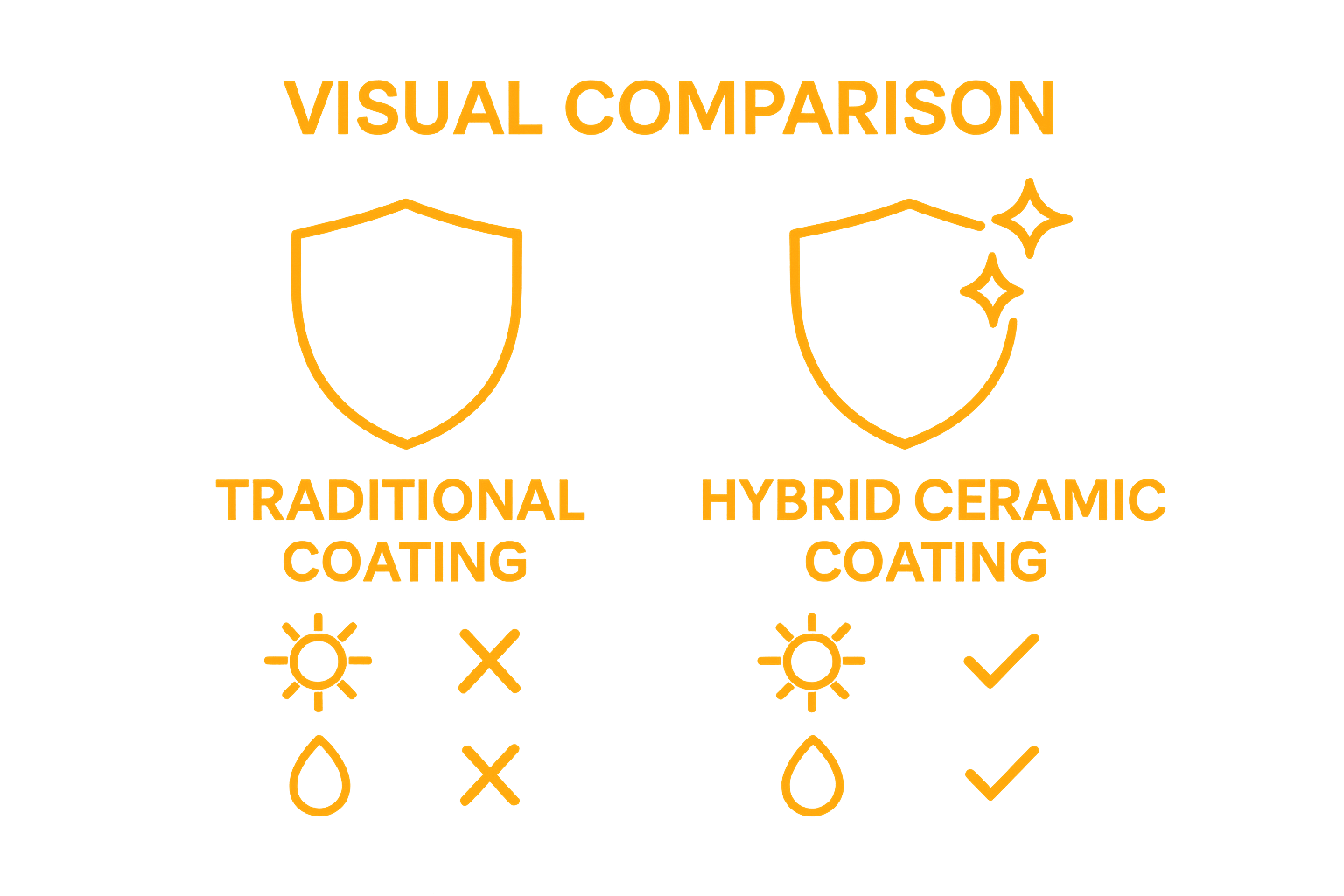
The economic benefits are substantial. By creating a robust barrier against environmental stressors, hybrid ceramic coatings minimize wear and tear, preserve aesthetic qualities, and maintain the structural integrity of surfaces across various applications. Homeowners and vehicle owners can expect reduced maintenance expenses and prolonged surface lifespan.
Comprehensive Environmental Protection
Hybrid ceramic coatings offer multi-dimensional protection against environmental challenges. Key protective characteristics include:
- Exceptional resistance to ultraviolet radiation
- Superior water and chemical repellency
- Outstanding scratch and abrasion resistance
- Significant thermal stability across extreme temperature ranges
- Resistance to oxidation and color fading
The comprehensive nature of this protection means surfaces remain pristine and functional under conditions that would typically cause rapid degradation. Whether protecting automotive paintwork, architectural surfaces, or industrial equipment, hybrid ceramic coatings provide a consistent, high-performance shield against environmental wear and tear.
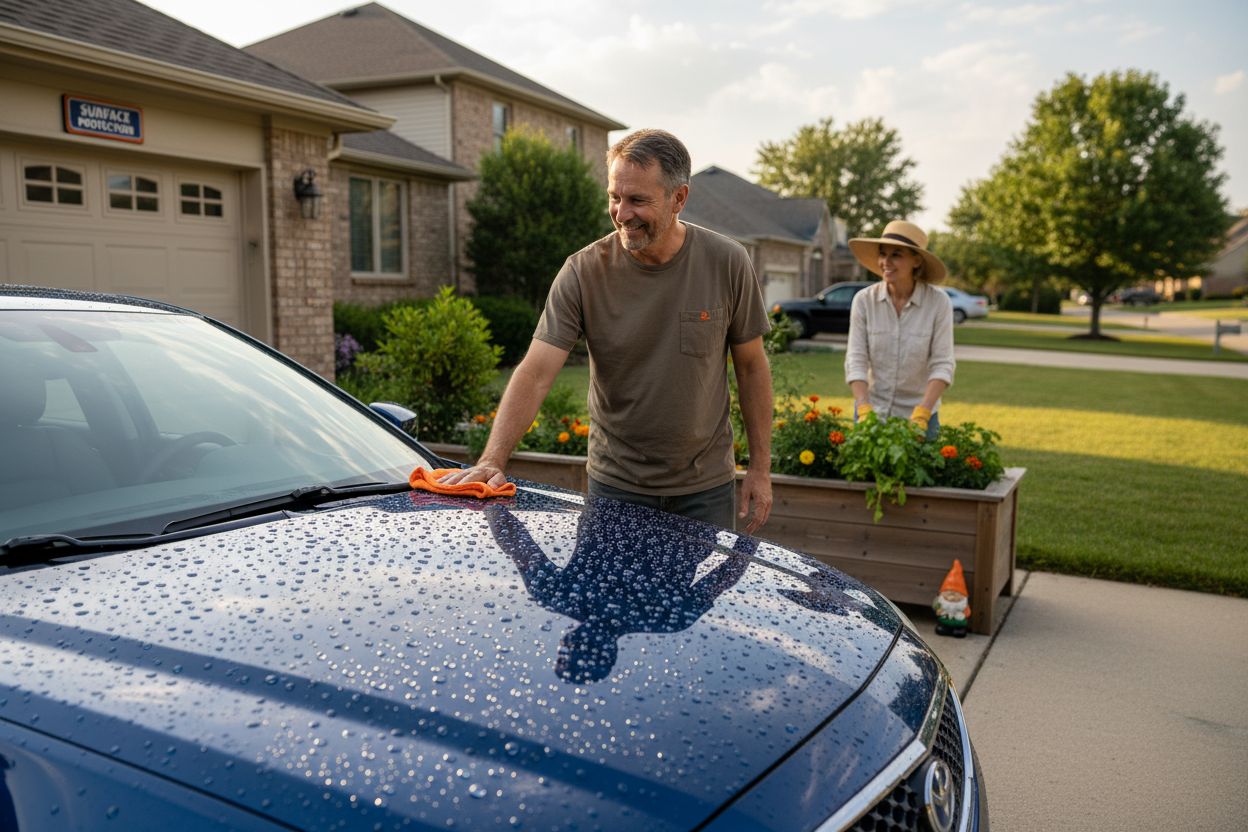
Real-World Applications: Where and Why to Use Hybrid Ceramic Coatings
Hybrid ceramic coatings have emerged as a transformative solution across multiple industries, offering unprecedented protection for diverse surfaces and materials. Explore advanced polymer coating technologies that complement hybrid ceramic protective strategies. These advanced coatings have revolutionized surface protection by providing robust defense in challenging environments.
Automotive and Transportation Industry
Automotive applications represent one of the most significant domains for hybrid ceramic coatings. Vehicle owners and professional detailers increasingly rely on these advanced protective layers to preserve paintwork, prevent corrosion, and maintain aesthetic appeal. From luxury cars to everyday vehicles, hybrid ceramic coatings offer a comprehensive shield against environmental degradation.
Professional racing teams and automotive manufacturers have particularly embraced this technology, recognizing its ability to enhance vehicle longevity and performance. The coating’s molecular structure allows it to withstand extreme temperatures, UV radiation, and mechanical stress, making it an ideal solution for high-performance vehicles.
Industrial and Architectural Protection
Beyond automotive applications, hybrid ceramic coatings provide critical protection in industrial and architectural contexts. Key areas of application include:
- Architectural metal surfaces and building facades
- Industrial machinery and equipment
- Marine vessels and offshore structures
- Aerospace components and aviation equipment
- Renewable energy infrastructure
In these environments, hybrid ceramic coatings serve as a critical defense mechanism against corrosion, environmental wear, and structural degradation. By creating a molecular barrier, these coatings extend the functional lifespan of expensive equipment and infrastructure, delivering substantial long-term economic benefits through reduced maintenance and replacement costs.
Below is a table outlining real-world industries and environments where hybrid ceramic coatings are commonly applied, highlighting the specific benefits in each scenario.
| Application Area | Typical Surfaces Protected | Key Benefits Provided |
|---|---|---|
| Automotive/Transportation | Car exteriors, paint, wheels | Resists UV, scratches; preserves appearance |
| Architecture/Building | Metal facades, exterior walls | Prevents corrosion, protects against weather |
| Industrial Machinery | Equipment, tools, pipework | Reduces wear, eases cleaning, prolongs life |
| Marine | Boats, marine components | Fights salt corrosion, prevents buildup |
| Aerospace/Renewable Energy | Aircraft parts, solar panels | Maintains performance, resists extremes |
| Outdoor Equipment | Furniture, decks, recreational gear | Shields from UV, moisture, seasonal damage |
Protect Surfaces Smarter With Advanced Hybrid Ceramic Coatings
Struggling to keep your car or home surfaces looking new while fighting off UV rays, rain, dirt, and daily wear? Hybrid ceramic coatings solve the very problems discussed in the article by forming an ultra-durable barrier through innovative molecular bonding. This means longer-lasting protection, easier cleaning, and less time spent worrying about environmental damage. Discover how ShinyKings brings this next-level technology to your garage or home with unique, science-driven products.
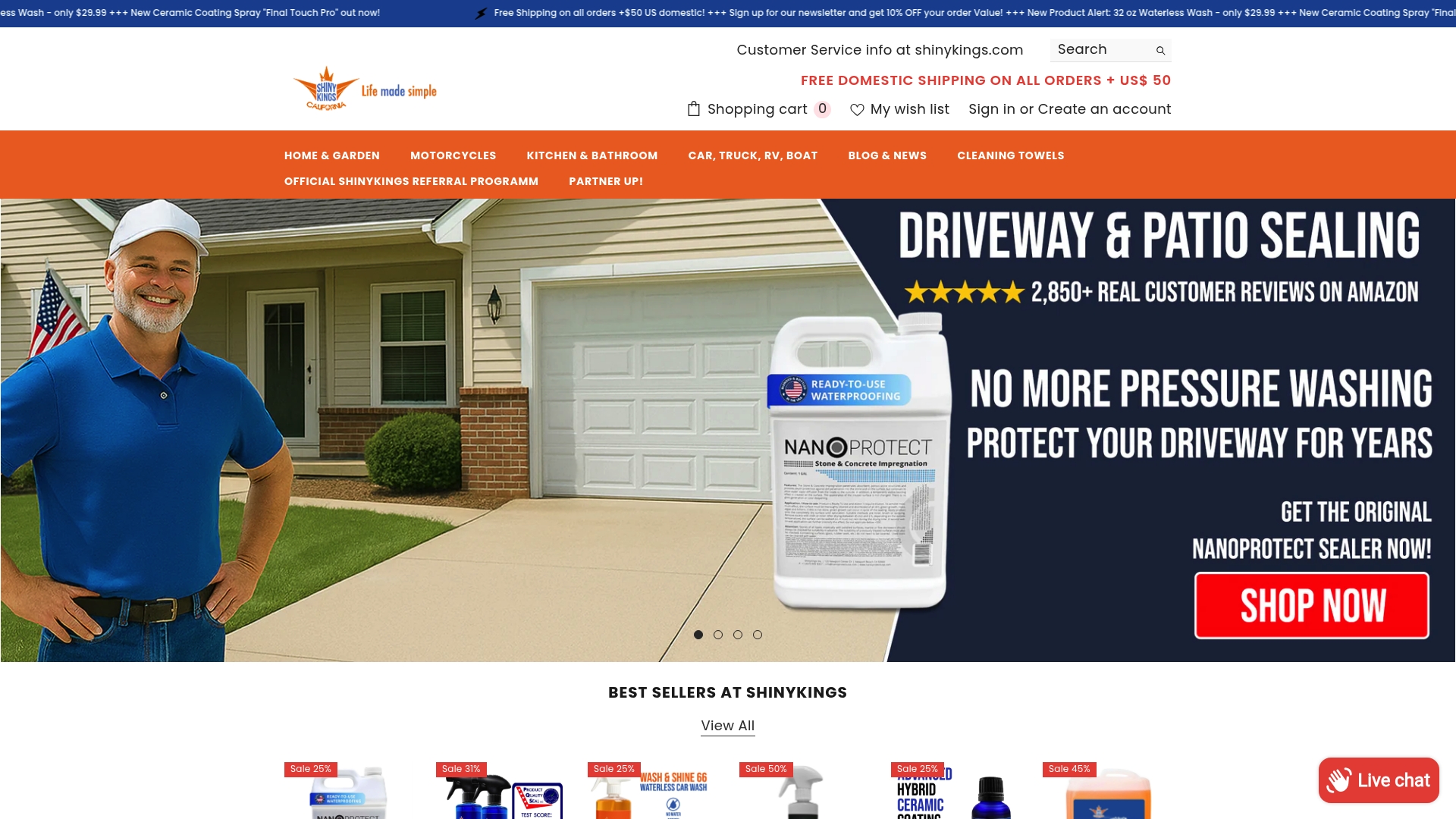
Ready to see the difference a true hybrid ceramic formula can make? Visit our main website at https://shinykings.com for premium ceramic and graphene coatings engineered for serious results. Learn more about our graphene coating innovation and cutting-edge surface protection solutions. Take charge of your surfaces and secure long-term value—explore ShinyKings today before damage becomes permanent.
Frequently Asked Questions
What is a hybrid ceramic coating?
Hybrid ceramic coating is an advanced protective solution that combines organic and inorganic materials to create a durable, long-lasting protective layer on various surfaces. Unlike traditional coatings, it forms a molecular bond with the substrate for enhanced durability and resistance.
What benefits do hybrid ceramic coatings provide?
Hybrid ceramic coatings offer exceptional protection against UV radiation, water and dirt repellency, scratch and abrasion resistance, and significant thermal stability. They preserve the aesthetic quality of surfaces while extending their functional lifespan.
How long does a hybrid ceramic coating last?
A properly applied hybrid ceramic coating can last for several years, significantly reducing maintenance requirements and costs. The molecular integration with surfaces ensures durability compared to traditional coatings that may need frequent reapplications.
Are hybrid ceramic coatings suitable for all surface types?
Yes, hybrid ceramic coatings can be applied to a variety of surfaces, including automotive paint, architectural elements, outdoor furniture, marine vessels, and industrial machinery. Their versatility allows them to provide comprehensive protection across different environments.
Recommended
- What is Nano Ceramic Coating? Understanding Its Benefits – shinykingsinc
- Understanding What is Fluoropolymer Coating and Its Benefits – shinykingsinc
- What is Hydrophobic Coating? Understanding its Benefits – shinykingsinc
- Motorcycle Graphene Coating Ultra 10H+ Wash&Shine 66 DIY Coating – shinykingsinc


